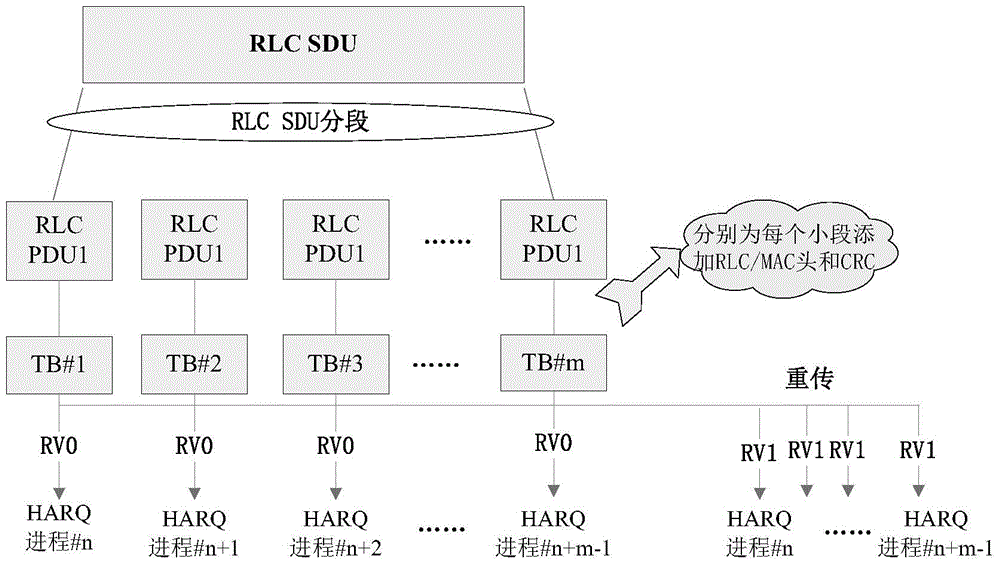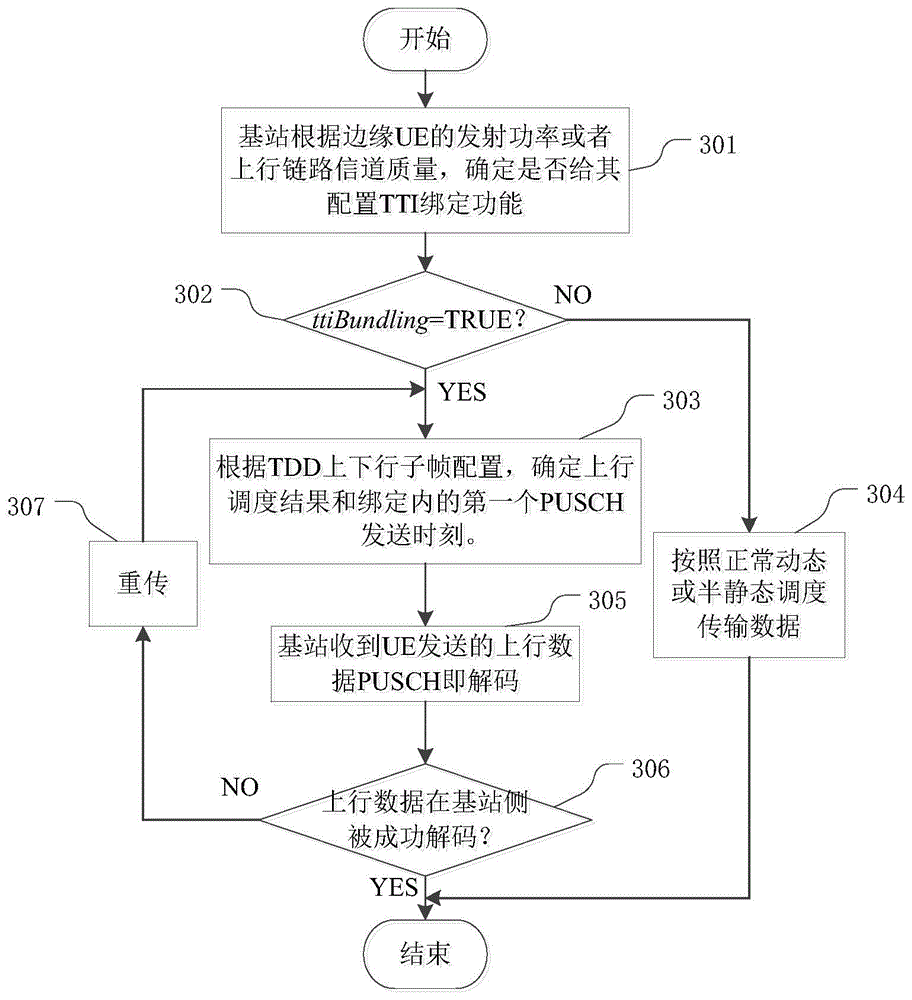TTI (Transmission Time Interval) binding method for reducing business delaying in TD-LTE (Time Division-Long Term Evolution) system
A service delay, cell edge technology, applied in the direction of using the return channel for error prevention/detection, etc., can solve the problems of excessive uplink authorization control signaling overhead, low system throughput, difficulty in meeting service quality requirements, etc., to reduce RV The effect of waiting time, reducing service transmission delay, and improving system throughput
- Summary
- Abstract
- Description
- Claims
- Application Information
AI Technical Summary
Problems solved by technology
Method used
Image
Examples
Embodiment Construction
[0020] The embodiments of the present invention will be further described in detail below in conjunction with the accompanying drawings.
[0021] The invention is figure 2 On the basis of the traditional TTI bundling scheme in the TD-LTE system shown, taking into account the small data packets or high-quality transmission of the UE configured with the bundling function, a TTI bundling method for reducing service delay in the TD-LTE system is proposed. Determine the method.
[0022] image 3 It is an implementation flowchart of a TTI binding method for reducing service delay in a TD-LTE system of the present invention, comprising the following steps:
[0023] Step 301: the base station determines whether to configure the TTI bundling function for the edge user according to the continuously received transmission power headroom reported by the cell edge user UE or the detected uplink channel quality of the UE;
[0024] Step 302: judge the value of the ttiBundling parameter in...
PUM
 Login to View More
Login to View More Abstract
Description
Claims
Application Information
 Login to View More
Login to View More - R&D
- Intellectual Property
- Life Sciences
- Materials
- Tech Scout
- Unparalleled Data Quality
- Higher Quality Content
- 60% Fewer Hallucinations
Browse by: Latest US Patents, China's latest patents, Technical Efficacy Thesaurus, Application Domain, Technology Topic, Popular Technical Reports.
© 2025 PatSnap. All rights reserved.Legal|Privacy policy|Modern Slavery Act Transparency Statement|Sitemap|About US| Contact US: help@patsnap.com



